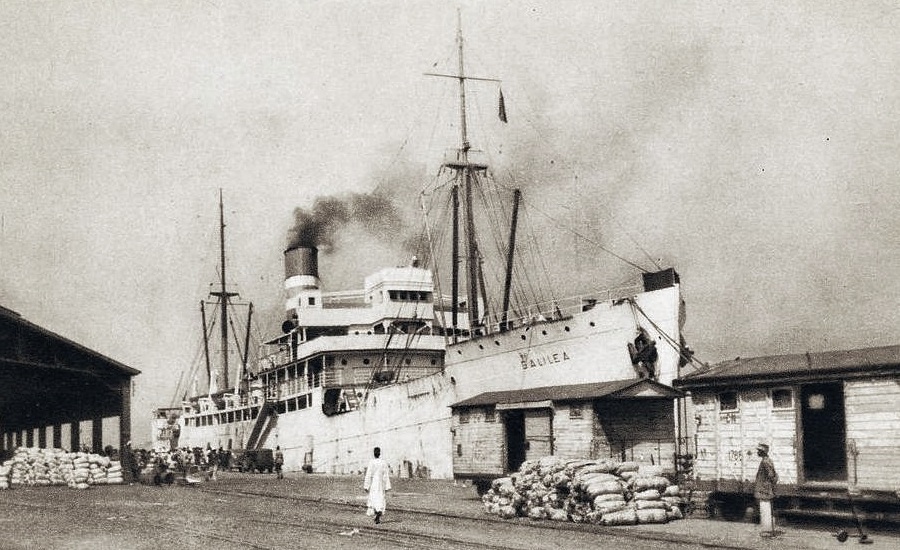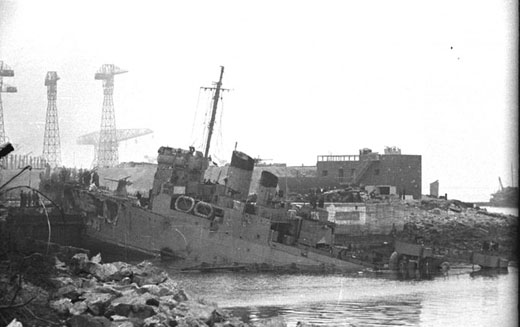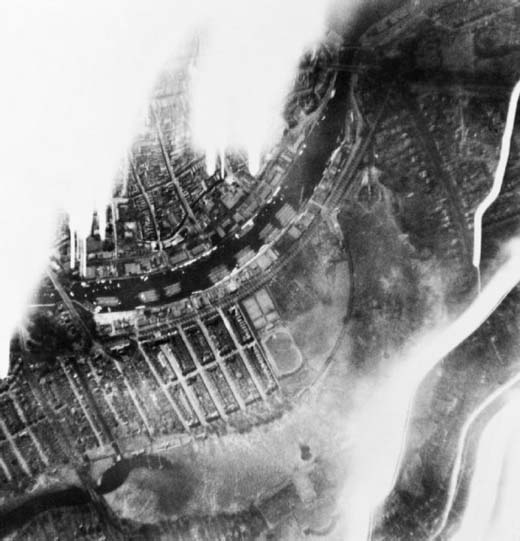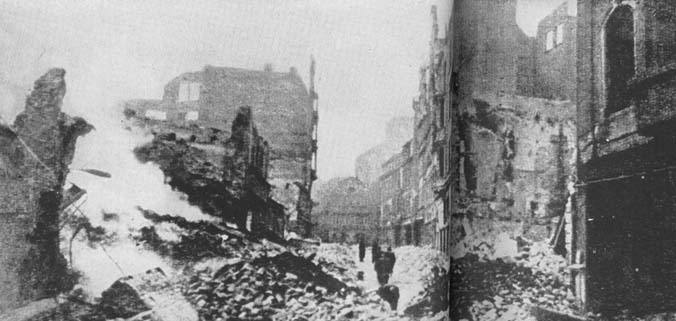Air Operations, Australia
-40 pilots of the 49th Pursuit Group's 9th Pursuit Squadron down 3 Japanese Army twin-engine bombers over Darwin at 1310 hours.
[Air Operations, Europe
BOMBER COMMAND- During the night 234 aircraft, including 146 Wellingtons, 41 Hampdens, 26 Stirlings and 21 Manchesters are sen on a raid to Lübeck, in Schleswig-Holstein, on the Trave estuary some 10 miles from the Baltic Sea. This raid is the first major success for Bomber Command against a German target. The attack was carried out in good visibility, with the help of an almost full moon and, because of the light defences of this target, from a low level, many crews coming down to 2,000 ft. The force was split into 3 waves, the leading one being composed of experienced crews with Gee-fitted aircraft; although Lübeck was beyond the range of Gee, the device helped with preliminary navigation. More than 400 tons of bombs were dropped; two thirds of this tonnage was incendiary. 191 crews claimed successful attacks. Many ancient buildings and monuments are destroyed. The reports from the ground say 1,425 buildings are destroyed, 1.976 are seriously damaged and 8,411 are lightly damaged. These totals represent 62 per cent of all the buildings in Lübeck. The casualty report from the city includes 320 people killed and 784 injured. This action gives Hitler an excuse for recalling two groups of bombers from Sicily and ordering them to carry out reprisal raids on a number of historic British cities, including Exeter, York and Canterbury. These 'Baedeker Raids' begin in April.
|
|
Lübeck City Center |
 |
- RAF air superiority in Europe is now firmly established due to the increasing demands of the Eastern Front on Luftwaffe resources.
- In minor operations, 2 Blenheims raid Holland, 7 Hampdens lay mines in the Frisians and 14 aircraft on leaflet flights over Holland. There are no losses.
Atlantic
The British destroyer Campbeltown is used as an explosive vessel against the gate of the massive dry dock Normandie at St Nazaire, France.
[Battle of the Atlantic
The Battle of Convoy PQ-13 takes place over the next 4 days. After being scattered by storms, the convoy and escorts are attacked by German bombers, torpedo planes, 6 U-boats and 3 destroyers. 5 merchant ships are sunk. The cruiser Trinidad cripples the destroyer Z-26, but is then hit by 1 of her own torpedoes which circles back causing serious damage. (See May 14.)
[Burma
In response to a request by Gen Stilwell, Gen Alexander orders the I Burma Corps to attack in the Irrawaddy sector. The Japanese are heavily engaged at Paungde, southeast of Prome.
[ The Italian Liner Galilea |
 |
Diplomatic Relations
The Vatican establishes diplomatic relations with Japan.
[France
St Nazaire Raid, Operation CHARIOT. The German battleship Tirpitz is in Norway, but the British fear it can break out and be a menace to Atlantic convoys. If it were to break out it could only be docked at the St Nazaire lock. British Commandos are, therefore, given the task of destroying the huge lock. In the early morning hours the HMS Campbelltown, the ex-USS Buchanan, deliberately rams the dock gates at St Nazaire, under murderous German fire, while 260 British commandos set about to destroy the dock machinery. 5 tons of high explosive charges in Campbeltown's bow explodes about noon before the Germans could disarm her killing many German naval personnel. The operation succeeds but only after the force is severly mauled. All but 2 of the 18 coastal craft that accompanied the Campbeltown are sunk stranding many of the Commandos. 170 of the men are either killed or captured.
British Destroyer Campbeltown |
 |
Occupied France
The first trainload of Jews from Paris begin being shipped to Auschwitz. 6,000 Jews are earmarked for imprisonment.
[Philippines
On Luzon the Japanese, moving into position for an all-out offensive against Bataan, feint against the I Corps and push in the outpost line of Sector D on the II Corps front. The supply situation of the defenders has become precarious under the incessant bombing and shelling. Efforst to run the blockade and supply the garrison with necessary items have virtually failed, and the supply situation is growing steadily worde.
[
